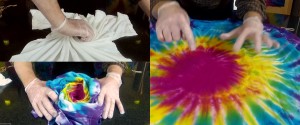
Color always attracts people in their everyday life. We see different colors in everything we have in our life such as the color of the vehicles, walls, clothes and the vegetables etc color rules everywhere. That is the reason we are experimenting with different colors. What’s more, what superior to fabrics that are an indistinguishable part of our lives, on a par with our second skin, something that we can take care of to introduce ourselves the way the world should look at us.
What is dyeing?
The procedure of coloring fabrics, yarns or fibers with synthetic or natural dyes the dyeing process has been in existence since ancient time. Primitive or ancient dyeing methods included rubbing crushed pigments into cloth or sticking plants to the fabric. With the growing time, the techniques became more advanced. Natural or organic dues from berries, plants and crushed fruits, which were boiled into the fibers and fabric, gave it resistance. In the modern stage, dyeing can be applied anytime while manufacturing of textile – fabric, yarn, fiber or other products including apparels and clothes.
What are Dyes?
Substances included in the fiber by dispersion, chemical reaction or absorption that add color to textiles. Dyes differ in their attributes such as resistance to sunlight, alkalies, gas, washing, perspiration and others; their affinity and esteem for distinctive fibers; their solubility, their reaction to cleaning agents and method of application. We can classify dyes based on their characteristics and not all dye, be it man-made or natural, is best-match for every type of fabric.
Basic Dye
Basic dyes are known as cationic dyes. The reason behind this is when organic bases salts are ionized into the cationic and anionic part that’s time cation is liable for color creation. Dyeing of basic dyes are carried out in the acidic form. Look at the other side, basic dyes are sales of organic bases or hydrochloride. They are insoluble in the water yet it becomes soluble when methylated spirit or alcohol is applied. For different fibers dyeing processes are different.
Direct Dye:
A class of dyestuffs known as the direct dye is applied legitimately to the substrate in an alkaline or neutral bath. Direct dyes are characterized as anionic dyes with substantivity for cellulosic fibers, basically applied from a fluid dye bat having an electrolyte, either sodium sulfate or sodium chloride. Direct dyes are molecules that hold fast to the fabric particles without assistance from synthetic concoctions. Direct dyes create full colors on linen and cotton without modranding and likewise can be used for wool, silk and rayon. Such dye offers bright shades however show poor wash speed. Different types of aftercare are utilized to improve the wash fastness of these dues and are termed as “after treated direct colors.”
Direct Black 22
The dye solution to Add thick sodium hydroxide solution for dark blue light red; join solid hydrochloric acid contain brown light black precipitation. Direct black 22 is mainly used for wool/stick, nylon/rayon blended fabric dyeing, cotton, viscose and printing, additionally utilized in paper and leather dying.